Best Xfce distro of 2013
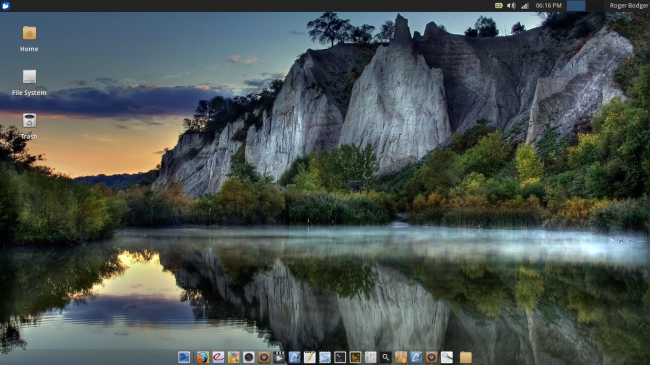
Until about a year ago, I considered the Xfce desktop to be boring and bland and not that beautiful. I never thought it could be a decent contender for the likes of KDE and Gnome. Then, one day everything changed. It was the day Gnome 3 was born, and I figured that my favorite choice for the desktop environment was gone now, living in the shadows. While a few distributions still cling to the good ole Gnome 2, and there’s the MATE reincarnation, the landscape has been forever changed.
Instability breeds opportunity, and into the vacuum came Xfce, trying to become a viable alternative. However, desire apart and actual results apart. In 2011, Xfce was still not good enough, no matter how much we wanted it to be become the next Gnome 2. But in early 2012, things started to change. I’d like to credit the now discontinued Dreamlinux distro as the one that broke the barrier, followed by the stellar Xubuntu Pangolin, which has now uprooted many a system on my boxes, and even revolutionized my eeePC netbook. Since, I have become sort of a fan, which means we should try to vote the best Xfce edition for this year. Mind, it won’t be easy, because Xfce is still not the default desktop environment for most distributions out there, and usually comes out as a secondary or even tertiary spin. But with these difficulties facing us, we shall search and vote.
Candidate 1: Sabayon 11
Back in March, I took this Gentoo-based monster for a ride. Normally, a KDE system, Sabayon also offers a bunch of other desktop environments, Xfce included. Anyhow, my experience with this following setup was not among the best. While it can be hard separating the user space problems from the underlying family issues, the Xfce crop had more problems that I’ve normally seen with Sabayon. So we can’t blame the package manager, but media playback and default beauty? You would definitely expect more from the Italians. It was an okay build, but it did not inspire passion and excitement.
Candidate 2: Manjaro
This is another distribution based on pagan god worship and sacrifice of users on an altar made entirely of git commits. The thing is, Arch is a monster, like Gentoo, but Manjaro manages to bridge the gap and bring the system to the wider masses. It also tries to do that by using the Xfce desktop environment.
Manjaro has its share of problems, but apart from that, there’s the question of beauty, simplicity and stability. You win some, you lose some. Furthermore, another surprise was the resource consumption. Xfce prides itself on being lean and mean, and the Xubuntu example on my Asus netbook is a definite testatement to this boast. Manjaro was fairly decent, but it did not awe me in any sense.
Candidate 3: Xubuntu Ringtail
For the past three releases, Xubuntu has been getting better and better. I like consistency. It’s one of the better indicators of quality and slow, steady growth. Version 13.04 of Xubuntu is no exception. While the initial setup can be made more exciting, you cannot fault its practical functionality, speed or stability. Another strong side is the way system settings are neatly packaged into a single category, so you do not need to hunt them all over the place.
However, the system did require a reinstall after a botched attempt to setup the Nvidia drivers, but this is one of those family ailments rather than a very specific Xfce thing. I did claim that had it not happened, Ringtail would have been a perfect distro. Indeed, it blends all the right ingredients in the right dosage, and you end up with a sleek system that has everything you need, including a fair share of fun and incredible speed. I believe this is one of the fastest desktops I have ever had the pleasure of using.
Candidate 4: Linux Mint Olivia
Now, things are getting interesting. Olivia is actually based on Ringtail, so you’d assume that things would be pretty much identical. Well, you couldn’t be any more wrong. First, Olivia comes with the most unique Xfce setup around. Because it does not look anything like Xfce. It has a very typical Mint looks, and you might mistake it for Gnome, MATE or maybe even Cinnamon.
While most distro developers do not give equal love to their other, less favorite children, the Mint team did not neglect their Xfce baby, and it shows in the small and big details. The desktop has been put together with excellent taste, and you get the expected, colorful functionality any which corner you poke. However, the system, on the kernel level, misbehaved for a while, and thus soured the overall experience. Still, if we can disconnect the Xfce desktop from the CPU, then things are quite good. On top of that, as a bonus, you get phenomenal speed and quiet. Rock solid, among the more refined sessions you can possibly find, if only, if only we can ignore the early fiasco with the CPU going berserk. But as far as Xfce goes, ’tis definitely one of the more original flavors on the market.
And the winner is …
Tough. Really tough. I’d like to say Xubuntu, but given Kubuntu’s win in the KDE round, this would be unfair and possibly not very interesting. But it deserves it, it really does. Wait. Linux Mint 15 Olivia Xfce is a damn good distro, too. Unfortunately, both had problems, which seem entirely system related. It’s as if the fate is trying to steer me away from perfection. I just can’t seem to be given the chance to declare that ultimate 10/10. Not to Xfce, not as yet.
So let’s call it a tie. Xubuntu and Mint. Sure there are many other distros around, and I have yet to test them, and sample their goodness, but among the four candidates that graced my fingers in 2013, the two Ubuntu-based systems definitely take the lead. Manjaro is cute, a noble effort, but it’s still not mature and robust enough. Sabayon simply needs a serious intake of passion, the way it used to have once.
Back to our winners. Xubuntu feels a little more focused. Mint comes with its own application stack and beauty that sweep the senses, and it’s so refreshing to see Xfce taken to another level, proving what can be done. But I am worried about the kworker/watchdog thing, and why I have not see it happen with other editions of Mint, or other systems. I did also have to fight with Xubuntu for a while, but I won eventually, whereas the kernel battle against Olivia still persists.
For those who feel like using something new and different, Mint offers the ultimate answer. Xubuntu is rock solid and super-fast, and comes from a family that seems to have established its pedigree, so if you’re into familiar and stable, then there’s your choice.
Conclusion
Four distros does not sound like much, and you may find the competition biased. But that would be looking at the results from the totally wrong angle. First, you need to consider this. Two years back, I would hardly bother using this desktop environment, and now I am keen, excited and looking forward to new versions and spins. Second, the matter of beauty and practicality.
Xfce is no longer a geek’s domain. It has become a product that even normal people can use, with just the right amount of encouragement and some tweaks to the presentation layer, which is what Olivia and Ringtail do here so well. Moreover, you have phenomenal speed, so don’t toss away your old machines just yet, stability, and everything seems to be getting better and better. Hope is a great motivator.
Well there you go. Afore angry comments start pouring in, take a moment to bask in the rise of Xfce from the dust of nerdonia to becoming a viable, powerful and just equivalent to all the big players out there, and you need not feel like you’re compromising. On the contrary, which means 2014 will be even more interesting than this fleeting year. Your turn at words, please.

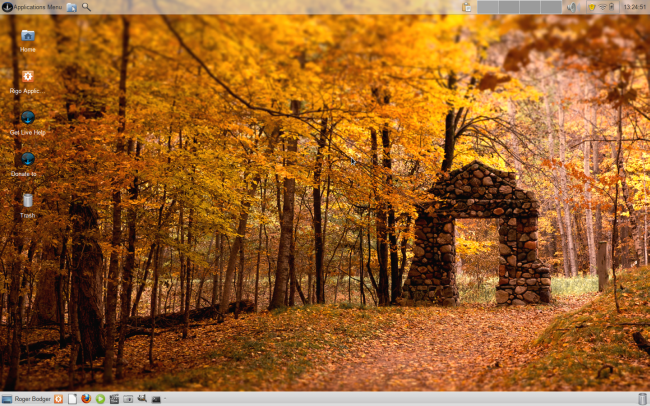
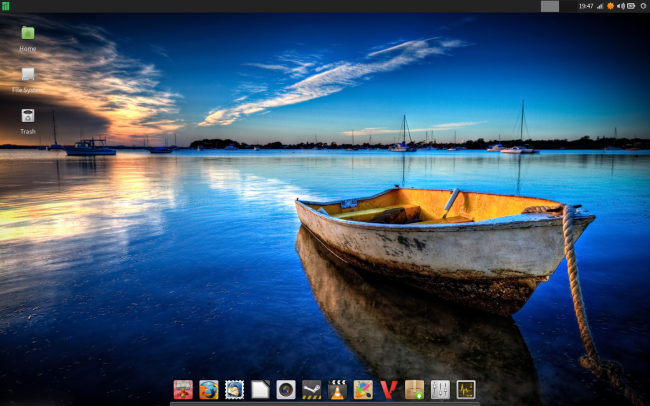
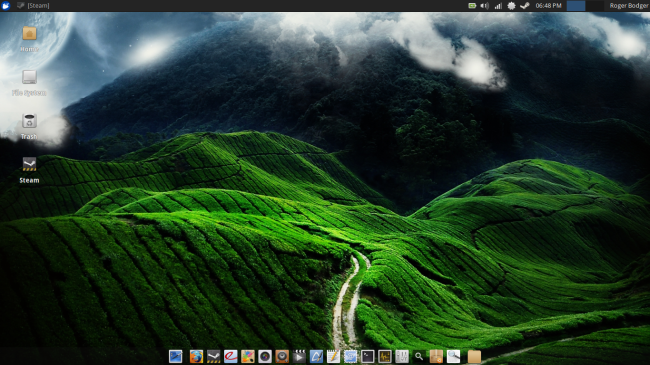
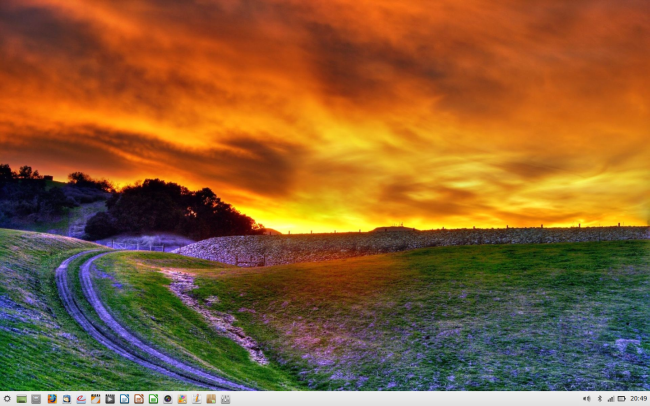
Good article, Xfce is definitely my favourite desktop environment.
You should give Manjaro another chance. I recently played around with 0.8.7 and it’s quite good!
I heard it can’t boot on UEFI or something. The official IRC channel was also quite apathetic, as they do not yet consider the distro to be “complete” (it’s still below 1.0 I guess). I’ll be keeping my eye on it though.
I am really interested in this distro, people give it very positive feedback, but It just didn’t want to boot when I tried to install it. I am not a hardcore linux geek but also I am not a newbie to the linux world and it was pretty disappointing not being able to even test it out… I am in love with the idea of rolling release distro as well. Definately will try again in some time when my frustration is forgotten.
Look, I would not know a sudo from an apt-get, but I blundered upon Linux Lite 1.0.6. a couple of months ago when I needed to test a sat connection with any o/s I could get on a USB thingy. Converted overnight! Can’t bear to even look on the other side of the partition now. If there’s something even better in Linux, with or without Xfce, I’m up for it. (Hey, why is sound so much better on this Linux thing?)
Sound is better because on Windows all sound goes through Windows Sound Server (it’s the Windows equivalent of, e.g., Pulseaudio, ESD, or JACK), and Windows Sound Server is not a high fidelity sound server. I believe it’s possible (though I think you have to go through some hoops) to bypass (or perhaps replace) Windows Sound Server and get better sound on Windows. Of course Microsoft could make a better sound server too, but most people don’t seem to care that much (and some can’t even seem to tell the difference), so they’ve never bothered to do so.
Thanks for that, Charlie. When I have less limited bandwidth I’ll be getting a big cheap music collection via Panda etc. The sound is that much better, though I’m hardly a trained ear.
Tonight I gave myself the horrors installing Linux 15 Cinnamon on a spare computer. It demolished XP pro on its partition. Then, after a lot of time, I realised that it was never going to work through the HDMI connect. Pic size was too big no matter what I did and there were alarming crackles every time I scrolled or did much at all. It’s now behaving well with an old VGA. I’m sure it’s a good o/s. Pity about the XP, but it’s an unlovely thing to me now.
No HDMI probs at all with Linux Lite (though I have to fiddle with browsers to get the fussily elegant print and scroll bars to a good size). Anyone know if its a cinnamon as opposed to xfce thing, or is it a Mint thing?
SolidXK very pleasant with his Whisker menu and Oxygen theme that makes XFCE looks like KDE, try it and you will not be disapointed
I think you mean SolydXK
You’re right sorry for the typo
Smaller IS better..
>Four distros does not sound like much, and you may find the competition
biased. But that would be looking at the results from the totally wrong
angle.
Nope. The title is “Best Xfce distro of 2013”. Expecting there to be more breadth and coverage of alternatives than an article at “OMG! Ubuntu!” might have is not unjustified. But it’s indeed happy news that Xfce is doing so well.
You are right, in a sense … but you did notice that you have links to extensive reviews for each one of the marked distros, where you can actually read all about the ins and outs of the four candidates?
Cheers,
Dedoimedo
No actually I didn’t…until I went back and looked again. Your links are bit too subtle, appearing as randomly bolded words. I would suggest making the heading links. Also, it seems that Fedora and OpenSuse should have been looked at as well as perhaps Arch and PCLinux. I understand that time and resources are limited, but at least looking at the other big distributions would have been nice.
I’d say Xubuntu was simply the best implementation of XFCE. And also, where else are you able to have an App Store where you can actually BUY things if you choose?. Only the Ubuntu family offers that even though I hear talks about OpenSUSE having an App store.
Not to mention, the only place to buy Torchlight for Linux is in the Ubuntu Store. Mint is just a hacked-up version of Ubuntu that loses some compatibility (and stability) in the process.
The Ubuntu and Mint teams have raised the bar for what a Operating System should be no matter what Desktop they provide. They are that good IMO.
Xubuntu is way ahead olivia imo. Xfce has come a long way, i really enjoy using it!
… so install Sabayon? but Arch Linux was left out, if not easier and faster to install since there last ISO release. the pick and choose what you want really makes Arch Linux but it can take some time to get all your packages but worth it.
Nice article. I’ve enjoyed your blog since discovering it. Wish you
had covered more contenders though. For instance, both Siduction and
Fedora Xfce would hold their own against the four distros covered.
i do not know about you, but my favourite distro is Fedora 19 now and i am using that with XFCE (not the live spin, i installed it from a DVD and chosen XFCE as my desktop). i ve never seen it work better before.
on second place is, where i am writing this now, FreeBSD. XFCE on FreeBSD is another level of awesomness.
Please give a chance to ‘Voyager’ a Xubuntu variante:
web site (in french): http://voyager.legtux.org/
and video presentation of the next release ‘Voyager 13.10’:
http://www.youtube.com/watch?v=AnjQjIR03hc&feature=youtu.be
Hi
To me I consider the following as the best XFCE Distribution:
1) Sabayon XFCE
2) Fedora XFCE Spin
3) Manjaro
Yours
V Narayanan
This article pretty much explains it all. Good one and pretty accurate imho. Most of the problems with XFCE distros are actually issues with the system, not with the DE. However things are really getting better and better for the mouse. My experience: Manjaro – couldnt boot in uefi, xubuntu has super huge problems with HDMI connections and bugs with their panel indicators, Mint is just not perfect in terms of performance that xfce is famous about, also i dont like their spin of the Software center and all predefined mint stuff like their search page etc… but overall they are all really good and everyday use ready. I would vote for xubuntu though… :)
I’m surprised SolydX is not listed here.
Previously, I had tried Xfce and found it unappealing. However, after seeing the default implementation in the Mint Xfce edition, I was hooked. Until recently, I have been using KDE, but I now prefer Xfce for its elegant simplicity. The only thing lacking for me in Xfce is the ability to keep desktop icons on the center or right-hand monitor in a multi-monitor setup. KDE does this quite well in FolderView mode. I hope that future versions of Xfce will include a FolderView setting.
How about mageia?